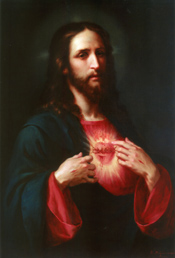There are those who claim that Christianity stole from the Mithraic mysteries, the birthday of their savior- December 25th.
Let's set aside the fallacy that this one date pigeon-holes the two religious figures into the same category as mythos.
Mithraic followers did not believe that their idol was a real person; they understood his visage to be symbolic. Most significantly his symbolic slaying of a bull;

Central in all Mithraic temples.
What Mithra symbolized was the natural change in the prominent constellations in the heavens. It's something you can see today and has been reported over and over; most modernly as: The Age of Aquarius.
Meaning: the central astrological constellation of stars in the sky from Earth's vantage point, was being worshiped from Taurus to Aquarius;
What does this have to do with Jesus and Christianity?During Greco-Roman times the spring equinox was in Aries which it had entered in approximatel 2000 B.C.E., before that it was in Taurus. Now with the exception of Leo, all the constellations within Mithraic iconography lie on the celestial equator, where it would have been seen when the spring equinox was in Taurus. Leo marks the sun's location at the summer solstice during the same period.
Thus the iconography of the cult, particularly the bull slaying or tauroctony, matches the astronomical situation that prevailed 2000 years before the origins of Mithraism. The progression of the equinoxes was not unknown in ancient times, it was discovered in 125 B.C.E. by the Greek astronomer Hipparchus, only a few decades before the initial rise of Mithraism. Hipparchus not only showed the progression of the equinoxes, he also calculated the constellations that that would have lain along the celestial equator when the equinox was in Taurus, the most recent position before the Greco-Roman period. It is interesting that during the period 4000 - 2000 B.C.E. bull cults were popular in the Mediterranean basis and the Near East. From a geocentric perspective, the progression (a movement of the earth) appears to be the movement of the entire cosmic sphere. For people with a geocentric worldview and a belief that the movements of the stars influenced human fates, the discovery of the progression would have been literally world-shaking; the stable sphere of the fixed stars being unseated by some some force apparently larger than the cosmos itself. Ancient intellectuals, accustomed as they were to seeing the works of nature, could easily have taken the great movement as evidence for the existence of a powerful, hitherto unsuspected deity.
Ulansay's speculation continues that by the act of the tauroctony becomes clear; the death of the bull aptly symbolised the end of Taurus as the constellation of the spring equinox and the beginning of the most recent era. The other figures in the tauroctomy all represent constellations whose special position in the sky was also ended by the force of the progression.
By killing the bull - causing the progression of the equinoxes - Mithras was in effect causing the entire universe. A God capable of performing such a tremendous deed would be eminently deserving of worship. Furthermore, the ability to move the cosmos would be seen as endowing Mithras with other powers as well, such as the ability to overcome the forces of fate residing in the stars and to guarantee the soul passage through the planetary spheres after death. Mithras was thus the God of the "New Age", we who live two thousand years after the cult of Mithras was born see the progression of the equinoxes continuing from the constellation of Pisces to that of Aquarius.
source
Not much.
Both were new religions that were prosecuted by the Romans ... and?
"There are those who claim that Christianity stole from the Mithraic mysteries, the birthday of their savior- December 25th."
...when Mithra didn't have a birthday: he sprang whole from a rock according to his mythos, and that is not given on a specific by date according to any research. The most significant Mithraic holiday is considered by most archeologists to be a feast held on June the 26th.
The next important claim by critics is that Mithras had 12 apostles, as Christ did. This is derived from Mithraic reliefs depicting 6 figures to the left, and 6 figures to the right of his central form; when in fact these were representations of the astrological 12 signs of the zodiac; and not real persons, nor disciplines.


